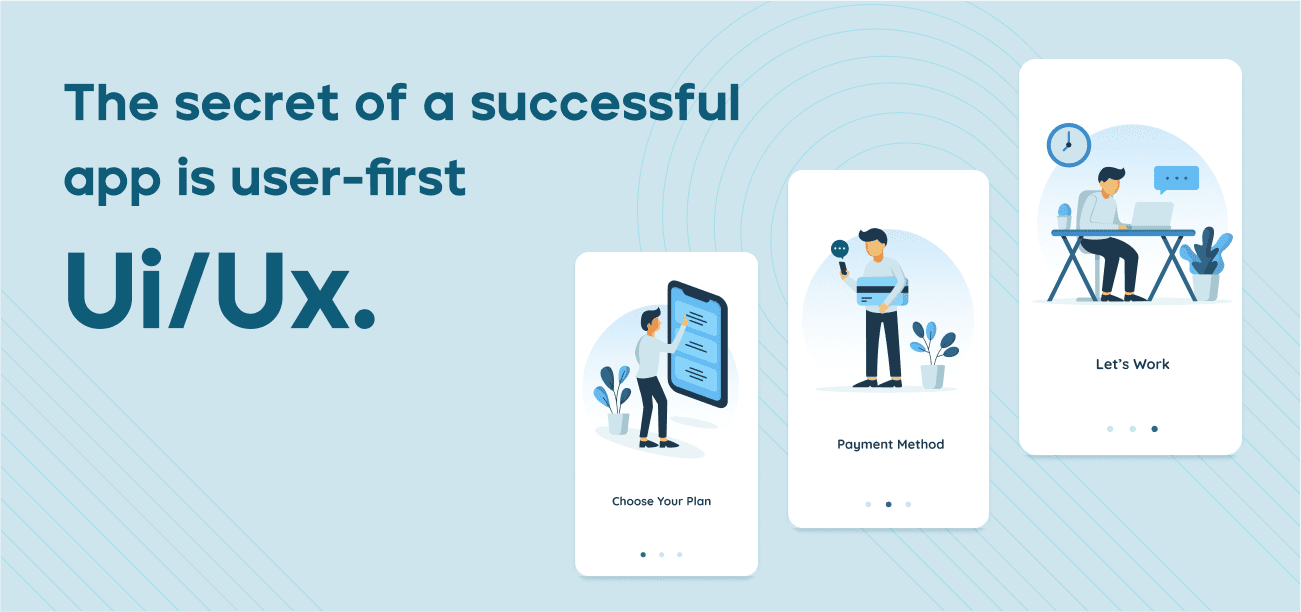It all began back when Apple introduced to us a revolutionary device. One that we had no clue of, something that would change how we perceived things in our lives, including design.
In 2007, when the iPhone introduced its very first touchscreen tech, it left us all curious with a single question- is it even for real?
Because all we knew before that were touchpads, and the introduction of touchscreen tech felt like everything we ever knew about digital devices was going to change.
The Apple team knew it wouldn’t be easy for the world to adapt to what was being offered to them so swiftly. Hence, the lead UI designer intuitively decided to resort to skeuomorphic designs.


Something that will help the users relate to the whole design with natural life objects- for better usability and interaction with the product.
Later with time, however, as users started getting more accustomed to the idea, the iPhone changed the game with flat designs. In 2012, with the launch of iOS 7, iPhone’s UI changed utterly; from bold and scalable, it went to a minimalist and more abstract interface.
This is the power of intuitive and user-first UX UI. If it could help Apple bring such a revolutionary change to the industry, think of its potential.
Had it not been for the intuitive interface, we wonder if people would have accepted this change, let alone adapted to it so quickly.
On that note, we find it crucial to finally list down the very reasons you need to focus on your app’s UI UX without fail.
Importance of UI UX design in mobile app development
1. Engages users
An app that works and feels nice is the one that captivates users.
Have you ever downloaded an app and wondered if it does what it says? Or maybe you just found it too confusing to operate?
You most probably uninstalled it when you noticed how disorderly it was in the first place. No one has the patience to focus on the app’s functionality if it just puts all the elements and colors in your face like that.
An app that lacks structure might function like it’s meant to, but it will not engage users to the point they start seeing that.
Functionality only helps if your app is designed well enough to engage the user. Otherwise, what it does and how it does that is something no one is interested in.
The key here is to maintain the right balance between the form & function of the app. The usability and aesthetics are the two components that go hand-in-hand and can not be compromised at any cost.
2. Satisfies customers, improves ROI.
Word-of-mouth stands as the most effective way of marketing even in 2022.
Statistically speaking, 90% of people prefer to trust the brands they’ve been referred to, which should tell you how strong an impact fellow customers can have on your prospects.
For the same reason, delivering a great customer experience is essential. Because you will either earn a bunch of customers through that one prospect or lose a bunch- the choice is yours!
However the circumstances are, you will need to focus on the UI UX of the app as it’s one of the many ways you deliver a seamless experience to your customers.
It’s because designing is not only about how aesthetically pleasing you make it all look but also about how you deliver the requirements of your target audience through a clear and intuitive UI.
Thus, focus on delivering a satisfactory experience to your customers, so you can earn referrals through them and increase your ROI.
3. Saves resources
It’s always easier to prevent a loss than it is to recover from it.
Launching an app is going to be a lot of work, and you’ll have to invest quite a lot into it. In a rush to launch the app into the world, you might skip or overlook some things that will cost you a handsome amount of money when you will try to fix them at a later stage. Nonetheless, it can take you twice as long to resolve the issues.
Time and money are the two most essential resources, and you put them at stake by compromising on the UI UX.
4. Top the app store charts
Both iOS and Android apps are to be built per the app stores’ respective guidelines. These often have specific design standards that the developers and designers are expected to meet to deploy them on separate platforms.
When apps fail to meet these standards, it becomes difficult for them to make it to the store, let alone come into people’s eyes. And eventually, all the hard work is wasted.
Save yourself from a situation like that and follow iOS and Android guidelines by heart whenever working on an app. It will help you meet industry standards while ensuring your app does wonder on the app store.
5. Earns your brand recognition
When people are satisfied, they talk about you, and positive talk attracts prospects. This brings you more qualified leads along with BRAND RECOGNITION.
As a brand, all you need is people who support you, and the only way to become a topic of positive talk among your prospects is to offer a memorable experience to your current customers.
At least it’s what the stats tell us, “88% believe in a brand if it’s recommended by a known person.”
Best UI UX practices to follow while developing an app.
1. Do it one step at a time.
Unlike desktop screens, there is limited space on our mobile phones, which means one can’t incorporate as many elements and actions on a single screen. In such a scenario, limiting the whole nudge and dedicating a screen to each process step remains the best tactic.
For instance, if the app offers grocery delivery services at home, a screen should be dedicated to each stage of the buyer’s process: from filling in address details to checking out and making the payment. Since trying to fit it all in one frame can become a mess.
2. Minimalistic designs
By minimalist, we point towards a design that does not poke the user in the eye. While creating, you need to be prioritising spacing and paddings. This is so you can ensure the final product is to the liking of your audience and is not cluttered, which is the very reason users choose to abandon applications.
By decluttering, you focus on the elements of utmost importance, and thus you can, in a way, lead the user towards doing what you want them to do. A cluttered app will only make the user feel lost and confused. For easy navigation and better user experience, a minimalistic design is called for.


3. Testing is vital too.
Well, you did your best, and after tons and tons of research and hours of hard work, you and your team came up with the final product that sadly didn’t do well in the market. This happens more often than you can imagine, and there’s no fault of the designers or researchers.
What’s required here is testing the product among a small group of users before it is finally released in the market. Sometimes even the smallest of errors can lead to the failure of a product, mostly overlooked by the ones who made it. Hence, as a primary rule of thumb, always ensure you beta-test your product before setting it up for public remarks.
4. loading speed
If we go by what the experts say, a webpage or interface must take anywhere between 0-4 seconds to load for reasonable conversion rates. On the contrary, as reported by Google in 2018, an average webpage takes around 15 seconds to load – thrice of what it should ideally be.
Another Google study shows that website bounce rates increase by 32% if the loading time increases from 1 second to 3 seconds.
Do you see what we are pointing out here?
Your page layout has to be such that it doesn’t take more than 3 seconds to load. It is a very vital element of the entire process of designing an app. Because why would anyone wait to engage with an app while plenty of alternatives are available at their alter?
UI/UX is one significant and imperative component of creating a mobile application. You can play on assumptions and aesthetics all you want, but it takes more than what pleases the eyes of the users to make them stick to your product. The app has to be intuitive and user-first; it has to be an ultimate solution. And of all the things, it has to be in accordance with the needs of your audience. All of that requires either a solid guess game or a heedful team that is willing to help you out.
Well, we can indeed provide you with the latter!







